Spanish-speaking child in ‘English Only’ era becomes school principal and champion for bi-lingual education and community
Pilar Mejia was born 74 years ago in a small town in Ecuador. As the first grandchild on her mother’s side, she received a lot of attention. “Even at that young age, I recited poetry and was cheery and outgoing.” But that changed when she was six and her family moved to southern California.
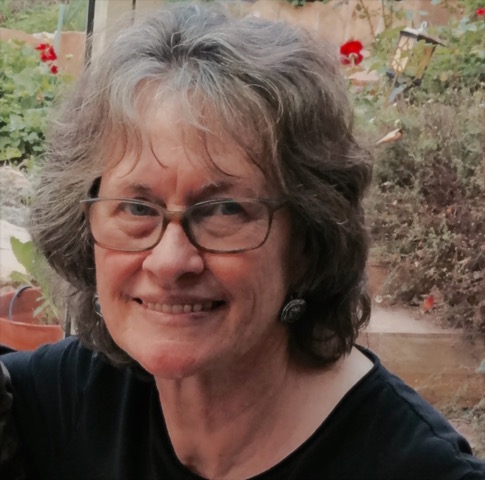
Although the local public school served many monolingual youngsters from Mexico, students were not allowed to speak Spanish in class or even at recess. Pilar, like most other students, obeyed. “I didn’t understand English so I couldn’t ask questions. I literally and figuratively lost my public voice.”
It was not until she became an adult that felt comfortable enough to speak out in public. Then, she went on to earn the degrees that enabled her to create classrooms welcoming all students’ languages and culture. Retired since 2010, Mejia remains active in the schools and as an advocate for bilingual/bicultural education.
No longer the mute little girl, she’s determined that other children will not be shamed for speaking their mother tongue.
“We advocate for our community in the school district and have given hundreds of thousands of dollars in scholarships,” said Mejia, who remains active in the Latin American Teachers Association. “This year, we granted 36 scholarships of $500 to $2,000 as well as a $4,000 scholarship for a future teacher.”
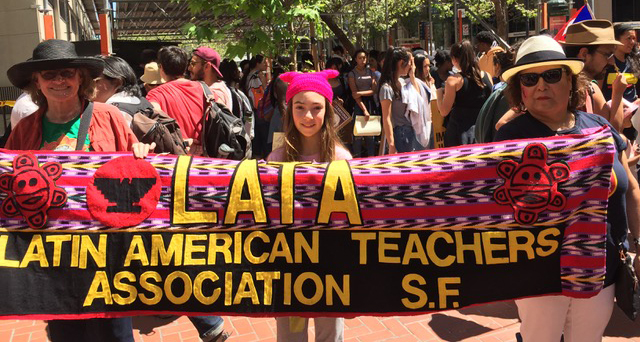
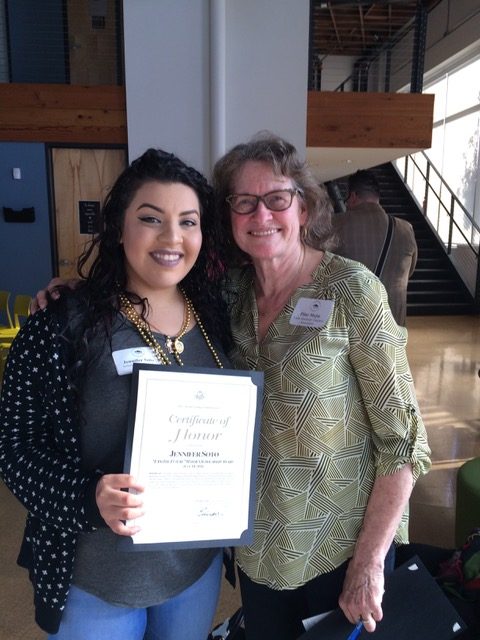
Before the pandemic, Mejia also volunteered in her son’s third-grade Spanish classroom at Moscone Elementary School almost every day. “I loved working with him. How many moms get to go to work with their sons? And I didn’t have any of the paperwork to do, just the fun part of creating hands-on activities.”
Mejia was born in 1946 in La Libertad, a small town on the Pacific coast of Ecuador. The oldest of four children and the only girl, she cared for her younger brothers. The lure of job opportunities brought her family to Los Angeles, where they joined her father’s brother.
The “English Only” movement, one of those political perennials, held sway at the time. It has a long history: from Benjamin Franklin, who worried the flood of German immigrants in the mid-1700s would overcome English as the common language, to 1986 California, when voters overwhelmingly approved Proposition 63, the “English-only amendment,” in the face of a growing Latino population.
Communication through pantomime
“Although LA was home to many Mexican students, we were not allowed to speak Spanish, so communication was all through pantomime … lots of pointing,” Mejia said. “I didn’t understand anything, and I never spoke in school.”
When she transferred to another school, the teacher placed Mejia, a light-skinned Latina, in the high reading group and seated her among the white students. Instead of being pleased, Mejia remembers a feeling of loss.
“I longed to play with the other Latinx children and speak Spanish, my mother tongue, but I was afraid of challenging the teacher or disrupting the way things were,” she said. “I understand white supremacy at a “gut” level because I have often benefited from it, sometimes at the price of my identity.”
After graduating from high school, Mejia enrolled in Fullerton Community College. It was “a liberating time,” she said. “Everyone was ‘turning on’ and partying…so did I.” She was thrilled when she became pregnant at 20 but didn’t want to marry her boyfriend. She moved to San Francisco in 1967 during the idyllic “Summer of Love.” She raised her son, collected welfare and lived in a commune. She smoked weed, listened to music and engaged in all the other activities that went with the lifestyle.
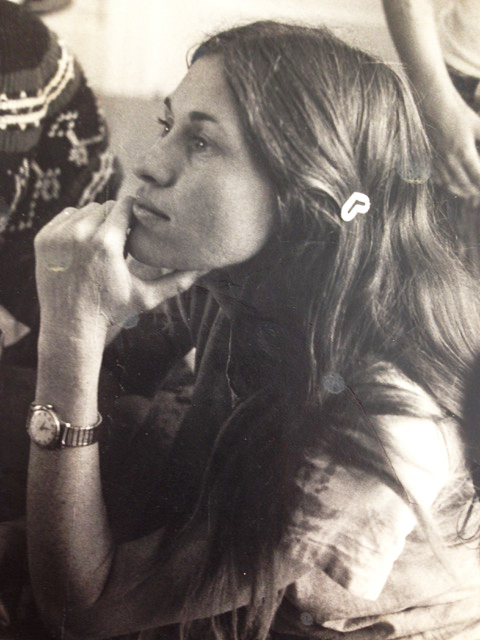
When Raul was four, Mejia took a job as a school bus driver and began looking for childcare. Won over by its philosophy, she enrolled him in a “free school” recently opened in the Mission District. Like in many such schools, parents and other volunteers from the community were enlisted as teachers; Mejia facilitated the art projects. While students learned to read and write, they also learned about themselves and the community.
“Mainly we were involved in the community, demonstrations, the farmworkers grape boycott,” Meija said.
Community activism
In time, the founder of the school and Mejia moved in together, living communally with some of the other teachers. Three years later the school disbanded. “We felt we were isolating our kids from the real world. We all had anti-imperialist political commitments, and the contradictions of private education were too great.”
When the school closed, she found a job with the San Francisco Unified School District as a bilingual teacher’s aide. The district had few bilingual teachers; the teacher she was assigned to did not speak Spanish.
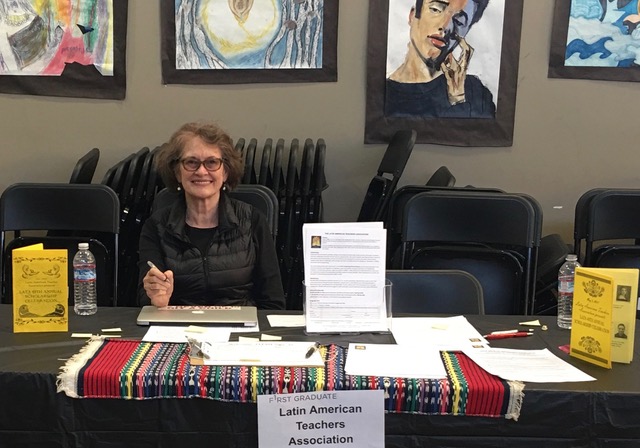
Mejia wanted to do something about that. Because the job was only part-time, she was able to take classes in child development at City College. She also worked for “El Tecolote,” a free, all volunteer, community newspaper. “I saw this as a perfect place to put my love of photography to use and work with other Latinos. The place where I could put my politics into practice and grow as a community activist.”
At stint at El Tecolote
They needed more writers, so Mejia learned to write “like I never learned in school. I was motivated because I was helping give voice to my community.” She grew as the group studied Chicano history and revolutionary struggles around the world. Her connection to the newspaper continues to this day, as Mejia helps the group celebrate its 50th anniversary as the longest running Latino bilingual newspaper in California.
In 1981 she transferred to the New College of California. She followed up her bachelor’s degree there with a teaching credential from San Francisco State University. Hired even before finishing, she started working as a fulltime bilingual teacher in the San Francisco Unified School District. Within seven years, she was a member of the school district’s support team for bilingual education, mentoring new teachers and assuring that students and their families had access to bilingual services. And she got more involved with LATA.
A mission to change schools
But changing the schools – that’s what Mejia had in mind – requires enlightened and proactive leadership from the top. So, that’s where she put her sights. In 1990, she received her master’s in Educational Administration from San Francisco State, then took a job as interim principal at Hawthorne Elementary School, one of the largest schools in the Mission District. In 1992, the teachers selected her as their new principal.
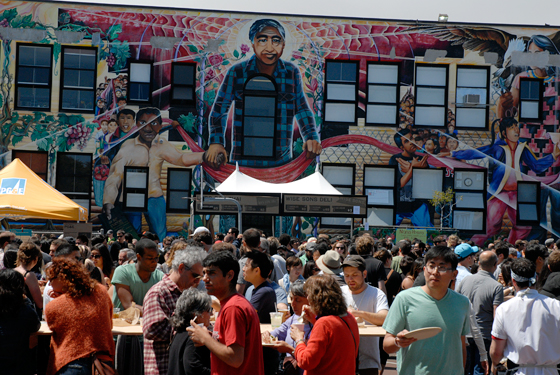
Mejia said the most rewarding part of the job was setting up a community based on self-determination and cooperative work structures around their various programs. But first, they renamed the school Cesar Chavez Elementary, after the activist farmworker.
They set up bilingual programs for Spanish and Chinese speakers, with the goal of total bilingual and biliterate proficiency. Even the teachers of deaf students defined themselves as bilingual, acknowledging American Sign Language as a native tongue.
“We didn’t want students to only use their home language to learn English,” said Mejia. “We wanted to strengthen their literacy in their native language.
The school also offered the first African-centered public-school program in the Bay Area.
Bilingual programs and integrated management
Each program decided how best to educate their students. For example, the Spanish bilingual team adopted multi-age classrooms. Eventually, other programs followed suit.
But it was equally important that all the programs worked together, Mejia said. “With families and teachers coming from so many different linguistic and cultural backgrounds, I knew we would need to focus on integration and unity.”
Decisions were made by consensus and all the school’s communities were represented on the staff leadership team, she said. In addition, the school established a family center where parents and families could drop in and spend time. She encouraged them to visit the classrooms and teachers to welcome them. For community events, they bussed parents in from outlying neighborhoods where their African American and Chinese students lived.
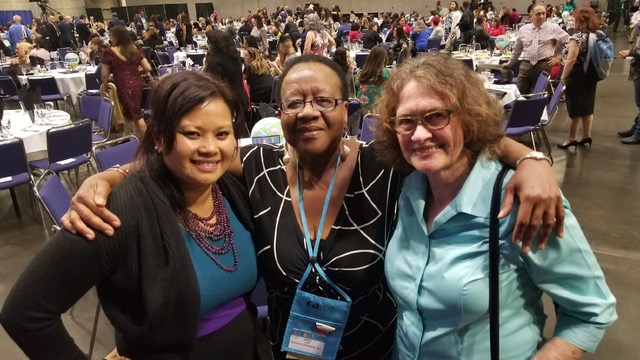
“Pilar was my mentor. She’s literally one of my heroes,” said Asha Mehta, who coordinated the parent involvement program at Cesar Chavez and today is a leadership and organizational coach for feminists of color. “She was so dedicated to the kids and the families: She was tireless; she probably worked 24 hours a day – writing grants, meeting with teachers and parents, out in the community.
“She had this vision of turning the school into a community resource. And it happened. Under her leadership, the school became a vibrant, multi-racial multi-lingual community.
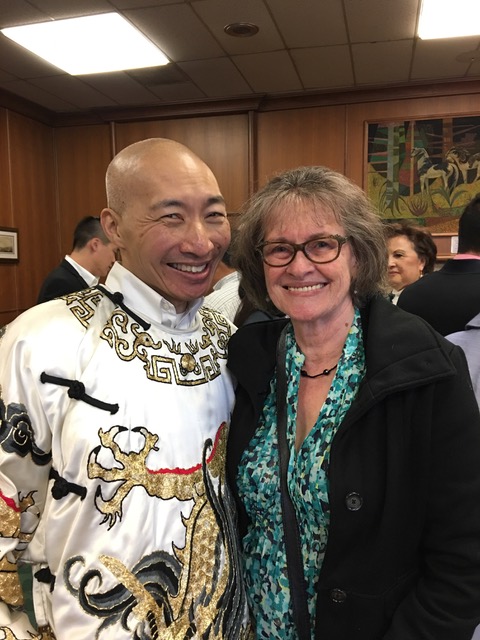
Meija still misses the community they had back then, but said, “LATA has been the place where I work with older colleagues and new energetic teachers that are dedicated to supporting Latinx teachers, students and their families.” In 2017, she contributed to and edited “Bilingual Education: Welcoming Home Languages in Our Classroom,” a Rethinking Schools publication.
Cesar Chavez offers only a Spanish bilingual program now, but Meija continues in her quest to create a multilingual community. The impact of not being able to speak her own language in her early classrooms was deep and long-lasting. “As an older, retired educator, I am sometimes surprised at the pent-up rage that still lives in me from those many years of living without a voice.
“I see myself in every child that enters school without understanding English, and this has influenced my commitment to being an educator, a social justice activist, and an advocate for bilingual education.”





